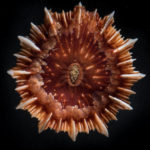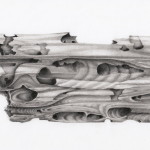The open ocean is a desolate, nutrient-poor place. For a long time it was assumed that any type of seafloor feature (seamounts! ocean ridges!) would correspond to heightened productivity and biodiversity–an oasis in the middle of a watery desert, so to speak. In theory, underwater features such as ridges could effectively disrupt ocean circulation patterns, creating regions where nutrient-rich water is brought to the surface and lets animals thrive. This is certainly the case in the Southern Ocean, where the presence of iron in surface waters leads to increased productivity around islands and seamounts.
But in general, it turns out we were pretty wrong about that hypothesis. The presence of a mid-ocean ridge doesn’t exaggerate biomass and biodiversity at all in the North Atlantic–not even close, in fact. This is the cool result from the ECOMAR project, a large multi-year study focused on the Charlie-Gibbs fracture zone in the northern Mid-Atlantic Ridge (Priede et al. 2013). I actually went to sea on the 2009 cruise, and as a scientist it’s pretty awesome to read a paper and exclaim “hey, I know those sample sites!”

So if the Mid-Atlantic ridge isn’t a biodiversity hotspot, what’s so interesting about this paper? Well…
We propose that globally sea floor elevation has no effect on deep sea biomass; pelagic plus benthic biomass is constant within a given surface productivity regime…We propose that generally for deep ocean areas, for depths greater than 800 m, pelagic plus benthic biomass is constant, the value of the total being determined by the mean primary production in the photic zone of the area under consideration.
Meaning, the relationship between depth and the amount of “living stuff” equates to a constant number. Like the speed of light in Physics! And that calculation of total biomass will be the same at most places in the world’s oceans. For any given depth, we can determine the total biomass of animals based on a graph that looks like this:

So at the Mid-Atlantic Ridge, the seafloor is raised up higher than the surrounding abyssal plains. This means that the amount of pelagic biomass in the overlying water column is lower (fish, plankton, all those swimmy things), but there’s way more stuff living on the ridge seafloor.

You can think about this as dividing a bag of jellybeans between two jars. You have a fixed amount of jellybeans (constant total biomass); you can divide them equally between both jars (water column biomass equals benthic biomass), or perhaps put one-quarter of your jellybeans into jar 1 and three-quarters into jar 2 (our Mid-Atlantic ridge example, where the seafloor biomass is jar 2). Note: you’re not allowed to eat any jellybeans in this example.
This is just one neat study to come out of the ECOMAR project, and I expect we’ll be seeing more exciting results in the very near future. Stay tuned!
Reference:
Priede IG, Bergstad OA, Miller PI, Vecchione M, Gebruk A, Falkenhaug T, et al. (2013) Does Presence of a Mid-Ocean Ridge Enhance Biomass and Biodiversity? PLoS ONE, 8(5):e61550.






2 Replies to “Is the Mid-Atlantic ridge an oceanic oasis?”
Comments are closed.